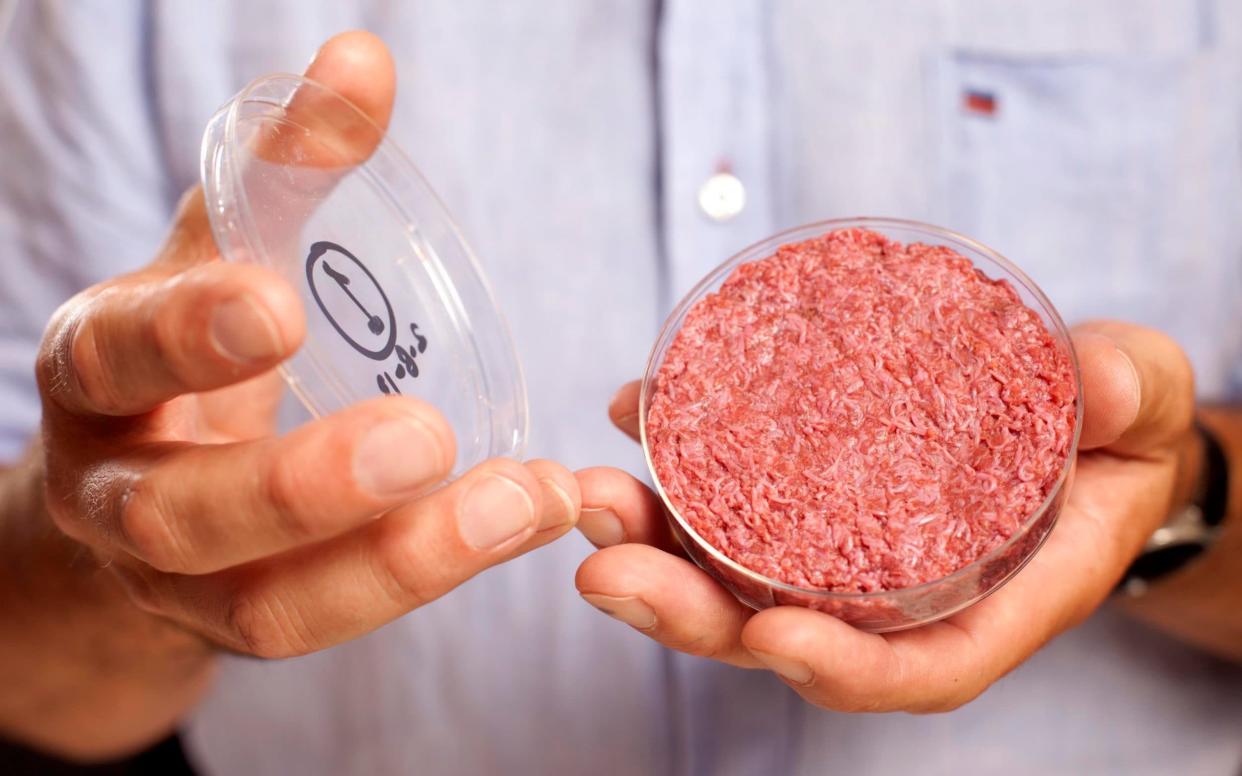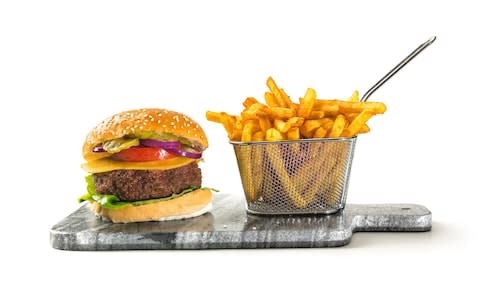Anyone fancy a lab-grown beef burger? Why clean-meating is the future of food

A sizzling burger, thickly cut and grill-ready – not sourced from farm-dwelling livestock, but in test tubes. This is where the future of our food is being developed and, following an announcement from Quorn, whose ‘ultimate’ quarter pounder will go on sale next month, looks set to herald the dawn of ‘clean meating.’
Lab-grown alternatives are racing to catch up with plant-powered ones – a prospect that gathered steam at Berlin’s first ever New Food Conference last week, which brought together scientists, startups and even the odd farmer in a shared quest of fixing impeding planetary armageddon.
Ditching animal protein is seen by an increasing number of people as the only way to deal with the fact that, by 2050, the world’s population will hit 10bn, rendering the demand for meat higher than the industry’s ability to supply it. According to the journal Science, animal farming provides just 18 percent of our calories, yet 83 percent of agricultural land is dedicated to it, while greenhouse gas emissions, water and overzealous antibiotic use pose further problems.
Experts such as nutritional scientist Hanni Rützler do not predict a shift to total veganism in our lifetime; meat is part of our historical and cultural existence. But in a world where the average person consumes a thousand chickens in their lifetime while the environment buckles under the pressure, cultured meat is fast becoming a likely saviour.
Also known as cell-based meat, clean meat, in vitro meat or lab-grown meat (a term one developer is dead against) the idea is that scientists can nurture a cell into something that almost exactly mimics the real deal. While nothing is on the market yet, beef, which has the greatest environmental cost, is leading the way. Fish, chicken and pork aren’t far behind, though Finless Foods, a company dedicated to bringing sustainable seafood alternatives to the world, are yet to put a date on when their tuna will reach market. These companies are largely run by non-vegans, with their target consumers being the same group.
An expensive and complex process – two journalists tried a cultured Mosa Meat burger in 2013, which cost $325,000 to produce, and deemed it too dry – it involves a stem cell being taken (via a harmless biopsy) and transferred to a nutrient-dense culture media, where it multiplies, and is fed sugars, salts, amino acids and nutrients in similar conditions to an animal’s body, before the meat (muscle and fat) is extracted. One tissue sample could potentially create 80,000 burgers. The end product is still crude, so burgers are currently the focus; juicy ribeyes are a long way off, though Israel’s Aleph Foods have created a steak using 3D technology which, they say, grows the essential four elements – fat, muscle fibres, blood vessels and connective tissue – ‘together like real meat.’

From a handful of companies and universities, there are now over 20 competing to achieve commercially viable production, says Dr Marianne Ellis, of the University of Bath, whose work focuses on scaling up production. Funding from governments, private companies and Silicon Valley investors is steaming in – Bill Gates, Richard Branson and Kimbal Musk, brother of Tesla founder Elon are backers of Memphis Meats, a Californian outfit promising to have their products on supermarket shelves by 2021.
“Two to three years should be doable for a high price point,” explains Dr Mark Post of Mosa Meat, the company who first produced a cultured burger, which was co-funded by Google’s Sergey Brin. Last year, they accrued another €7.5 million in funding; while there’s currently no exact figure for the industry’s worth, Richard Parr, managing director for the Good Food Institute in Europe, points out that “tens of millions of pounds have been invested in cell-based meat companies.” Mosa Meat suggest that products such as theirs will likely hit high-end restaurants before dinner tables, with the average cost coming in at around $11 per dish.
Not all diners will be thrilled with these developments, however. Dr Chris Bryant, whose PhD analysed public perception of such products, told me: “the initial reaction is of finding it gross. After a few minutes, people are much more accepting. The young are more willing than the old, men more than women, the left more than the right.”
Plant-based alternatives to meat have had less of an image problem to overcome: meat substitutes are seeing double digit growth year on year, according to Sainsbury’s, while a OnePoll survey found 42 percent of us want to increase consumption of such food. As the Western trend for flexitarianism soars, the growing success of milk alternatives demonstrate that people can change if products meet expectations. At Halo Burger in London, a ‘bleeding’ plant-based burger by Beyond Meat is almost indistinguishable from the real thing; having tried it, I found it to be far superior to a bad-quality burger, not quite as juicy as a premium option. Beyond Meat is sold in several stores and restaurants across America, such as T.G.I Fridays, while the Impossible Burger – made up of wheat, coconut oil and konjac – is currently on the menu at Beef & Liberty, ‘one of Hong Kong’s best beef burger restaurants.’

The fact remains that plant-based meat substitutes still cost an average of 43 per cent more than their animal equivalents. Cell-based meats will initially be expensive, too, and the fear of the unknown may hold consumers back further. But cultured products are safe, healthy, and ethical, says Dr Ellis: “The method of production is based on tissue engineering, which is very safe indeed. I’m not anticipating there would be risks as long as basic culture methods are followed.” Assessment and evaluation by the Food Standards Agency would be required before products came to market.
Livestock are given antibiotics by farmers as a preventative measure to avoid them becoming ill, and thus damaging their ability to be used for food: “one of our first priorities was not to use antibiotics,” says Dr Post. A huge advantage of in vitro meat, then, is that no such drugs are involved – given the rise in human antibiotic resistance, and the negative effects such tablets can have on our gut health, this could be transformative. There’s a lower risk of other contaminations – often picked up from unsanitary conditions on farms, where animals are usually kept in close contact – too: a swab test of Memphis Meat’s poultry came up clear, versus poultry containing E coli and salmonella.
Farmers are understandably concerned. Will they be out of work? Illtud Llyr Dunsford, a Welsh farmer who works with Dr Ellis, says: “If you talk to farmers who don’t understand the technology, then there’s an element of fear. It’s not a dissolution of agriculture, it’s the evolution of agriculture. Brexit and the end of agricultural subsidies are a much bigger threat.”
Memphis Meats’ David Kay agrees. “We don’t believe cell-based meat is going to entirely replace agriculture. We’re in the midst of a massive increase in demand for meat, we call it an 'and not or’ scenario. We need multiple meat methods to coexist in order to feed the world. It’s one tool in the toolkit.”
Culturally, we’re obsessed with protein – to the detriment of both individual and planetary health – but the plant- and cell-based alternatives are able to meet our body’s requirements perfectly well. As with most things, our ability to embrace a new way of eating is mostly in the mind.


 Yahoo News
Yahoo News 
